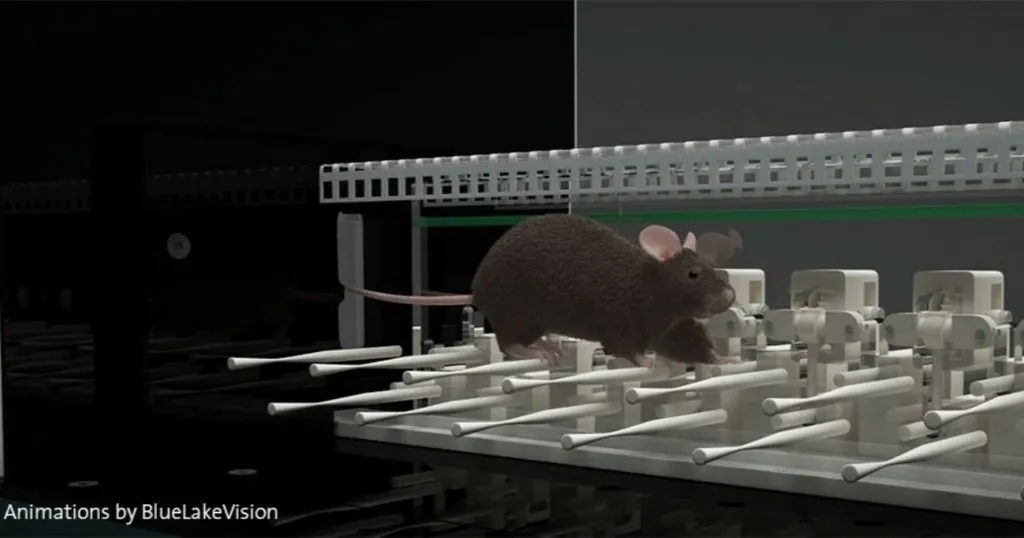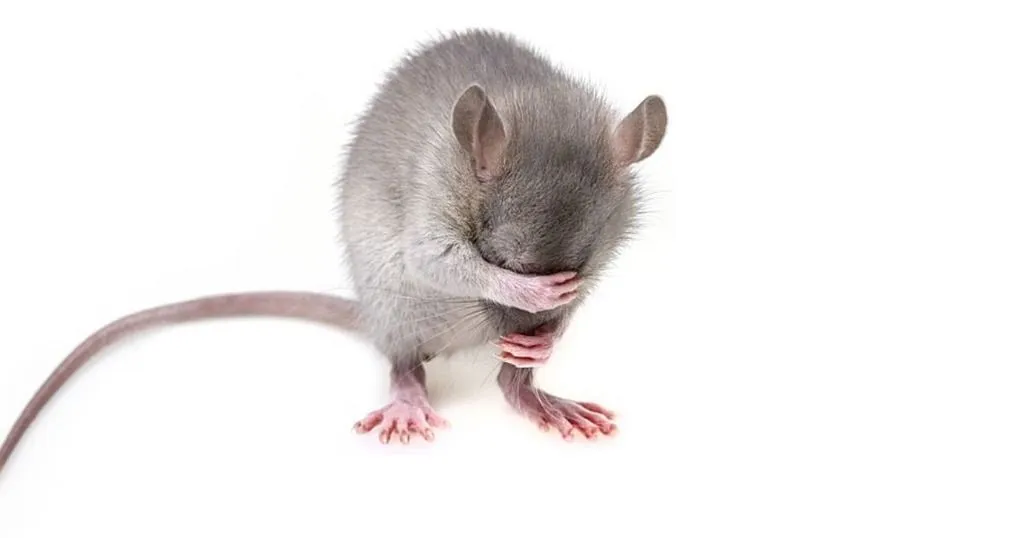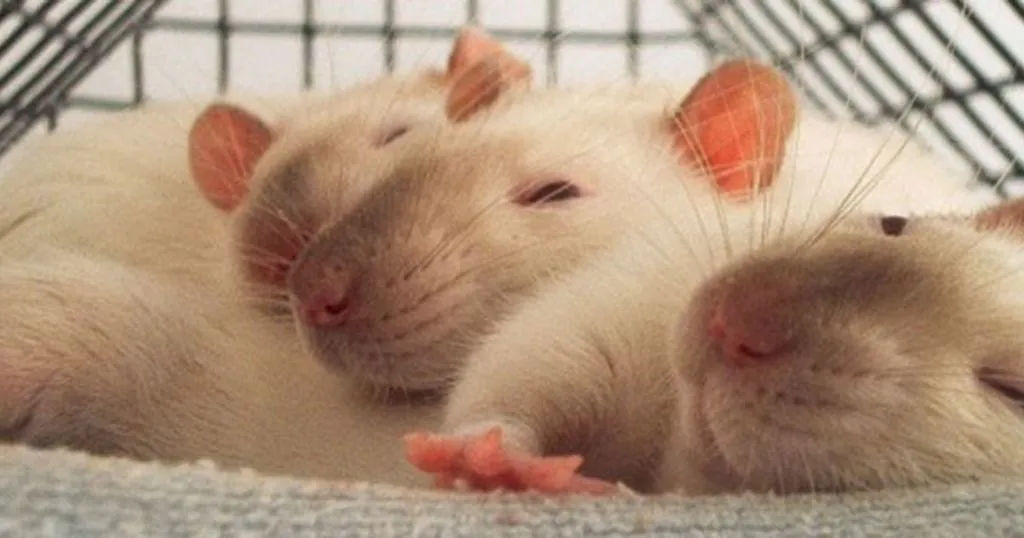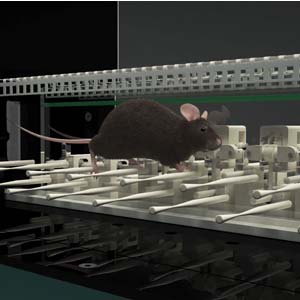Autistic mice have motor learning difficulties specific to the cerebellum
Autism is often associated with social behavior deficits and repetitive behaviors. However, motor abnormalities are also a part of the behavioral spectrum. Recent studies have implicated the cerebellum.
Posted by
Published on
Fri 13 Jan. 2017
Topics
| Autism | Cerebellum | ErasmusLadder | Gait | Locomotion | Motor Learning |

Most of us are familiar with the typical behavioral characteristics associated with autism: social behavior deficits and repetitive behaviors. However, motor abnormalities are also a part of the autism behavioral spectrum. These have generally been linked to malfunction of the cerebral cortex, but recent studies have also implicated the cerebellum.
Autistic phenotype in mice
Shank2 is a gene that encodes a postsynaptic protein and has been linked to autism spectrum disorders (ASD). In short, inactivation of this gene in mice creates “autistic mice” (Won et al. Nature 2012).
Shank2 and motor problems
The Shank2 protein is abundantly found in the cerebellum, particularly in the Purkinje Cells (PCs), but that does not necessarily mean that the motor problems observed in these autism models come from the cerebellum. To address this issue, two research groups recently generated mice that are specifically deficient in cerebellar Shank2.
Peter et al. published their findings in Nature Communications in March 2016, and Ha et al. authored an article in The Journal of Neuroscience two months ago.
Shank2 gene deletion
To pinpoint the role of cerebellar Shank2 in autism, both groups compared behavioral and motor abnormalities between global and cerebellum-specific Shank2 knockout mice.
Social phenotype
Interestingly, while Peter and colleagues found a phenotype consistent with ASD in both motor learning and social interaction in the PC specific knockouts, Ha et al. did not see the social impairments in their mice.
According to the authors, this might be due to the different ways in which these knockouts were created (e.g. a different exon deletion and slightly different genetic background).
Behavioral testing
Both groups performed an array of behavioral tests to assess motor performance, social behavior, repetitive behaviors, and anxiety. Tests employed for these assessments included the three-chambered social interaction test, marble burying, open field, and olfactory tests. For motor performance and learning measurements, mice were tested on ErasmusLadder.
ErasmusLadder
ErasmusLadder is a fully automated test in which mice have to learn to efficiently cross a horizontal ladder. After they gain familiarity to the ladder (phase one), mice are presented with an obstacle during phase two, in which one of the ladder rungs is raised. The obstacle is paired with a sound cue, which allows the system to assess motor learning. How animals deal with this obstacle over repeated runs allows for interpretation of cerebellar functioning. For the principle behind ErasmusLadder testing, please watch the video below.
Adaptation issues
Peter et al. did not observer significant ErasmusLadder motor performance issues in the PC specific knockouts during phase one, meaning that they are able to learn to efficiently cross the horizontal ladder.
However, problems arose for the mice as they were presented with the obstacle in phase two. In the challenged runs, control mice increased their speed to avoid the obstacle; this strategy was not employed by the PC knockouts. Peter et al. concluded that cerebellar Shank2 is indeed important for associative motor adaptation.
Different social phenotypes
The results in the study of Ha et al. were not completely the same. Their PC specific knockouts had problems in motor performance, already showing learning difficulties during non-challenged ladder-crossings. In fact, these mice showed the same motor deficits as the global mutants, and, unlike the mice of Peter et al., normal social behavior.
So while the results found by Peter and his colleagues point towards a role of the PCs in social behavior, the study of Ha et al. does not confirm this.
Motor testing
Another interesting result from the study of Ha and colleagues is that while the PC specific knockouts showed impaired motor coordination on the ErasmusLadder, they performed normally on the rotarod test, suggesting a very distinct influence of Shank2 in different motor functions. This shows the added value of several types of motor testing, and the sensitivity of the ErasmusLadder test in this scenario.
Learn more
To learn more about ErasmusLadder, please visit www.noldus.com/erasmusladder. References to the publications are found below:
- Ha, S.; Lee, D.; Cho, Y.S.; Chung, C.; Yoo, Y.-E. Kim, J.; Lee, J.; Kim, W.; Kim, H.; Bae, Y.C.; Tanaka-Yamamoto, K.; Kim, E. (2016). Cerebellar Shank2 regulates excitatory synapse density, motor coordination, and specific repetitive and anxiety-like behaviors.The Journal of Neuroscience, 36(48), 12143.
- Peter, S.; ten Brinke, M.M.; Stedehouder, J.; Reinelt, C.M.; Wu, B.; Zhou, H.; Zhou, K.; Boele, H.-J.; Kushner, S.A.; Lee, M.G.; Schmeisser, M.J.; Boeckers, T.M.; Schonewille, M.; Hoebeek, F.E.; De Zeeuw, C.I. (2016). Dysfunctional cerebellar Purkinje cells contribute to autism-like behavior in Shank2-deficient mice.Nature Communications, 7:12627.
- Won, H.; Lee, H.R.; Gee, H.Y., Mah, W.; Kim, J.I.; Lee, J.; Ha, S.; Chung, C.; Jung, E.S.; Cho, Y.S.; Park, S.G.; Lee, J.S.; Lee, K.; Kim, D.; Bae, Y.C.; Kaang, B.K.; Lee, M.G.; Kim, E. (2012). Autistics-like social behavior in Shank2-mutant mice improved by restoring NMDA receptor function.Nature, 486, 261-265.
Related Posts

Gut microbes: both cause and cure of autism?

The search for autism models continues - why rats are important


